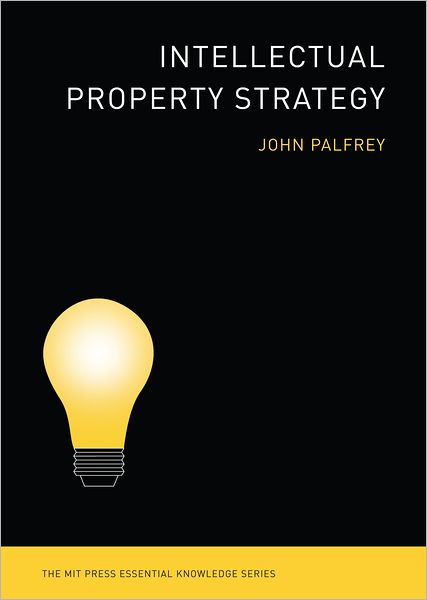Open@VT
Open Access, Open Data, and Open Educational Resources
Intellectual Property Strategy by John Palfrey
 (Update May 14, 2018: This book is now available in an open access edition with additional material.)
(Update May 14, 2018: This book is now available in an open access edition with additional material.)
John Palfrey’s Intellectual Property Strategy (MIT Press, 2012) is the first book I’ve read on the subject. Having read one of his previous books, Born Digital, and because it is in the same book series as Peter Suber’s Open Access, I suspected openness would be a theme, and I wasn’t disappointed. This review is mostly about that theme, rather than all aspects of the book, so keep that in mind. Palfrey is a well qualified writer on this subject, having taught law at Harvard, practiced intellectual property (IP) law, cofounded several tech startups, and is a venture executive. The book is aimed at CEOs and senior managers, and is short enough that it might be finished on a cross-country flight.
The four areas of IP are patent, copyright, trademark, and trade secret. Palfrey first addresses the prevailing “sword and shield” IP strategy by pointing out that it benefits lawyers more than organizations. He urges readers to “give special consideration to strategies of openness rather than exclusion, especially in the information context” (p. 3).
IP is a nonrival good- more than one party can use it simultaneously. The author points out that IP often gains in value the more that it is used, which is a flaw in the “full exclusion” approach. Palfrey is quite familiar with universities and libraries, and interestingly uses MIT’s OpenCourseWare as an example of using openness to increase assets. However, it’s important to establish ownership rights in order to give IP away (p. 56):
It may seem counterintuitive, but even the strategies of openness that I urge you to consider need to be grounded first in the system of rights in order to work smoothly.
Palfrey spends some time talking about open innovation, that is, using openly available or customer-generated information. For example, Zillow as well as legal publishers Lexis and Westlaw thrive in this environment. He cites a study (PDF) showing that the fair use economy in the U.S. supports hundreds of billions in exports, employs millions, and is growing by 5% annually. Palfrey warns that zealous protectionism can backfire, such as demanding royalties for using the song “Happy Birthday” (a demand that now appears fraudulent rather than protectionist).
Nonprofits as a special case are examined in Chapter 7. The differing missions of for-profits and nonprofits “opens up new possibilities” and can make IP strategy more important. Using libraries as an example, Palfrey suggests digitization in collaboration with for-profit partners, with a limited term of exclusivity during which the library receives royalties. Summarizing, he says (p. 120):
If the default in the for-profit world is to generate maximum revenues from the licensing of intellectual property, the default in the non-profit setting is probably to make intellectual property as broadly available as possible.
There are a few stumbles along the way- Palfrey occasionally uses the term “open access” in a confusingly loose way (p. 89, 105) despite discussing it accurately elsewhere (p. 118), and offers Google Wave (p. 68) as an example of open innovation (oops!). And he suggests that universities license IP in a nonexclusive way (p. 119), lowering fees for greater societal benefit (perhaps I’m too cynical, but I don’t see this happening).
I recommend this book as an introduction to IP in general- it’s a quick and informative read. Intellectual Property Strategy is available in Newman Library, and Palfrey’s book talk is below (beginning at 7:00).